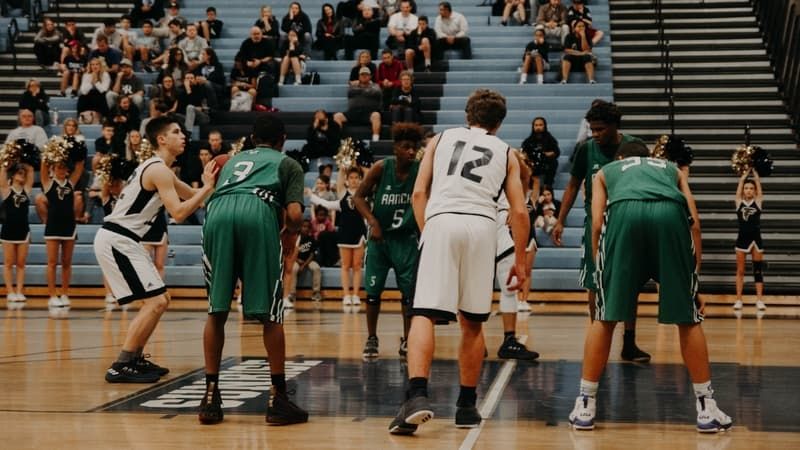Top Dual Degree Programs: A Comprehensive List for Ambitious Students
Read now/f/64062/800x450/a1b199d696/what-is-a-liberal-arts-degree.jpg)
Chat with us
/f/64062/800x451/d2ef8b2f6a/mit-blogs-2.jpg)
The United States is home to the Ivy League, a group of eight of the world's most prestigious universities. Located in the Northeastern United States, these top schools are all Ivy League Athletic Conference members. However, the US is also home to numerous world-class universities on par with the Ivy League in terms of reputation and academic resources.
People often use the term "Ivy League" to encompass any elite and prestigious college or university. Massachusetts Institute of Technology (MIT) is often mistaken for an Ivy League school because of its notoriety and prestige. Although MIT is not an Ivy League university, its classes are just as challenging, professors just as distinguished, alumni networks just as esteemed, and their acceptance rates just as competitive.
Harvard vs. MIT: These universities have their own unique academic and extracurricular programs, and students typically prefer one over the other. What makes each university unique, and how do you decide which university is right for you? What is MIT known for, and is Harvard better?
Read on to learn about the differences between Harvard and MIT!
The Ivy League schools are the eight selective private institutions in the Northeast that make up the Ivy League Athletic Conference. Over time, the term “Ivy League” became synonymous with prestigious colleges.
Harvard University is one of the most highly ranked and globally respected academic institutions in the world. The private, medium-sized liberal arts university offers 4-year undergraduate programs and 11 postgraduate institutions, including the highly ranked business school, law school, medical school, and John F. Kennedy School of Government. Founded in 1636, it was named for the college’s first benefactor, the young minister John Harvard, who, upon his death in 1638, left his library and half his estate to the institution.
Did you know: There are more than 400,000 Harvard alumni worldwide!
Massachusetts Institute of Technology (MIT) is one of the most highly regarded private universities in the United States. The coeducational, independent institution maintains a strong focus on scientific and technological research. Located in Cambridge, Massachusetts, MIT sits on the Charles River, not far from its highly prestigious neighbor Harvard University.
MIT comprises 30 departments across five schools and colleges and offers undergraduate, graduate, and postdoctoral degree programs. It was founded in 1861 by William Barton Rogers, who served as the university’s first president and envisioned a “new polytechnic institute” for technical and scientific education. Built during the Industrial Revolution, MIT’s original purpose was to help drive the U.S. industry forward.
| Harvard | MIT | |
|---|---|---|
| Location | Cambridge, Massachusetts | Cambridge, Massachusetts |
| QS World University Ranking 2022 | 5 | 1 |
| Class of 2025 Acceptance rate | 3.43% | 4% |
| Average GPA | 3.7-4.0 | 3.7-4.0 |
| Average SAT/ACT scores | SAT: 1460-1580 ACT: 32-35 | SAT: 1520-1580 ACT: 34-36 |
| Tuition | $51,904 USD | $55,510 USD |
| Median starting salary for graduates | $69,000 USD | $95,000 USD |
Both MIT and Harvard are located in New England, in the Northeast region of the United States. Getting to experience the fall foliage of New England for the first time is a memorable experience for many international students. But which university has a better location? Is MIT better than Harvard? It all depends on personal preference.
Both Harvard and MIT are located in the urban city of Cambridge, Massachusetts — across the Charles River from Boston. The campus is a few steps away from the T, allowing students to explore the different nooks both Boston and Cambridge offer. It is also home to many prestigious universities. The city naturally cultivates an intellectual yet vibrant scene.
As both Harvard and MIT are located in New England, you can expect all four seasons, from summers averaging 25° Celsius to winters as cold as 0° Celsius.
Here are a few of the most popular subjects offered at Harvard and MIT.

| Harvard | MIT | |
|---|---|---|
| Average class size | 12 | <20 |
| Total student population | 23,731 | 11,934 |
| Undergraduate population | 5,222 | 4,638 |
| International student size | 12% | 10% |
| Student-Faculty ratio | 7:1 | 3:1 |

Elite universities in the United States typically charge high tuition rates, but the good news is that Ivy League schools offer generous financial aid packages (more on that later). Undergraduate tuition rates at Harvard and MIT for 2021-2022 are $51,904 and $55,510, respectively. After considering fees, accommodation, travel, and personal expenses, the annual cost to attend either Harvard or MIT is about $77,020 - $79,900.
| Harvard | MIT | |
|---|---|---|
| Tuition | $51,904 | $55,510 |
| Room (Housing) and Board (Meal Plan) | $21,130 | $18,100 |
| Total estimated cost of attendance | $85,060 | $77,020 |
It’s no secret that the sticker price of attending a top university can be quite high. No matter your reasons for pursuing an education, the cost of tuition shouldn’t stop you from achieving your goals.
The figures mentioned above may seem out of reach for many, but there are financial aid opportunities at both Harvard and MIT!
Typically, students who earn under a certain income level are not required to pay tuition at Ivy League universities. In fact, over 20% of families at Harvard pay nothing, and over half of Harvard’s undergraduate students receive need-based aid through the university’s financial aid program.
Similarly, At MIT, the admissions process is need-blind, which means that applicants with financial needs will not be discriminated against. That puts MIT as one of six need-blind US universities that meet the full needs of every student — including international students.
Crimson's Admissions Experts have provided this free resource on How Financial Aid Works & How To Apply For Financial Aid if you'd like to learn more.

Harvard has more than 450 student organizations, including publications, five orchestras, a community service program, 40 intercollegiate athletic teams, and various other activities - artistic, musical, political, and social.
Meanwhile, MIT has approximately 450 student organizations, including the Outing Club, the Solar Electric Vehicle Team, the Debate Team, the FM station (WMBR), the MIT Society for Women Engineers, the Student Art Association, Model UN, and clubs focusing on dance, chess, and strategic games. At MIT, these clubs enhance campus life to complement the academic pursuits of students.
When it comes to sports, Harvard is an NCAA Division I school, while MIT is in NCAA Division III. If sports is your thing, then Harvard is a more competitive school in that regard.
Whatever your extracurricular interests are, there will be a club that suits you. You can also create your own student organization if one doesn't exist at MIT or Harvard! Both universities offer support and encouragement to carve your own path.

Harvard and MIT are highly competitive academic institutions, and applicants must meet minimum GPA requirements. While grades and accolades are important at these top universities, both consider applicants holistically, beyond academics.
MIT Admissions emphasizes test results and grades, but they also consider the application as a whole. MIT also evaluates you based on how well you match with the institution’s mission and values. They’re looking for students who align with MIT’s mission, collaborate and cooperate, take initiative and risk, possess hands-on creativity, show intensity, curiosity, and excitement, and prioritize balance.
When it comes to the essays, MIT requires you to submit several short supplemental essays and responses so they can get to know you better. The MIT supplemental essay is your chance to connect directly with the admissions team and show them why you want to attend MIT. Be open and honest with your answers.
Admissions officers at Harvard holistically evaluate every applicant. They look at extracurricular activities, personal interests and endeavors, and their plans beyond university studies. Through essay questions and supplemental information, admissions officers at Harvard want to know how you plan to make the most of your time at the university. Harvard has created an application guideline for prospective students on their website, so don’t forget to check it out.
Harvard and MIT are highly competitive universities in the US to get into. According to these acceptance numbers, MIT appears to be the easier one to get into. However, you still need to be at the top of your class and submit a holistic application that highlights why you deserve a spot at their universities. If you are coming from the US, your test scores need to be incredible.
Quality education is guaranteed regardless of which university you attend. When narrowing down your university options, remember to prioritize the academics — examine the course descriptions thoroughly or consider attending open days at each university to get a feel for them. You might also consider getting in touch with alumni from Harvard or MIT. You may also want to consider other top universities. To learn more about the other Ivys and what it takes to gain acceptance, check out our Ultimate Guide to Getting into Ivy League Schools. If you still have questions about which universities to apply to, please contact us! We can connect you with one of our academic advisors who can assist you with the admissions process.